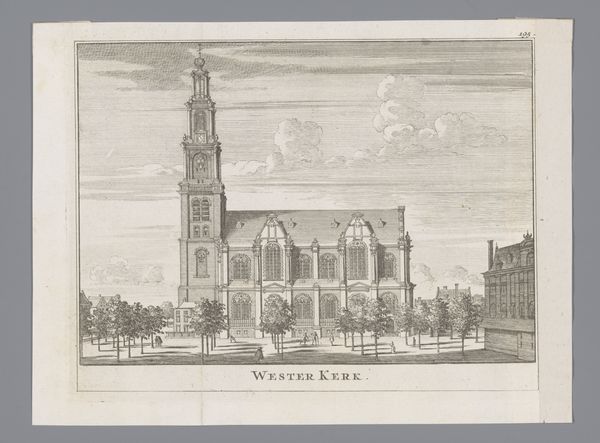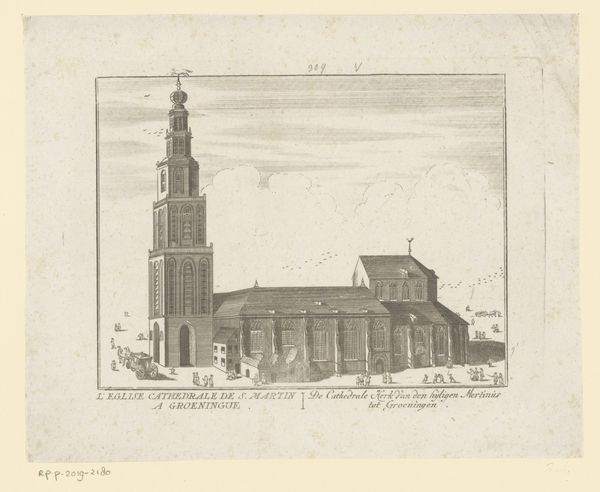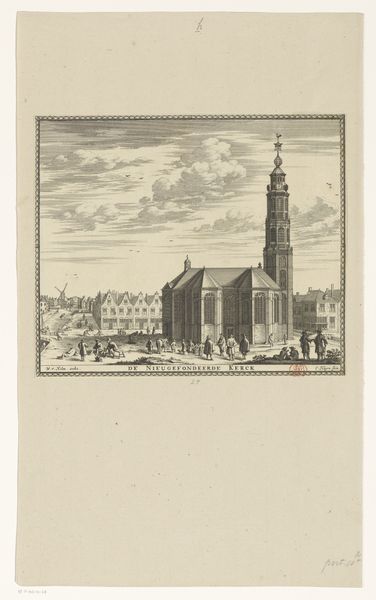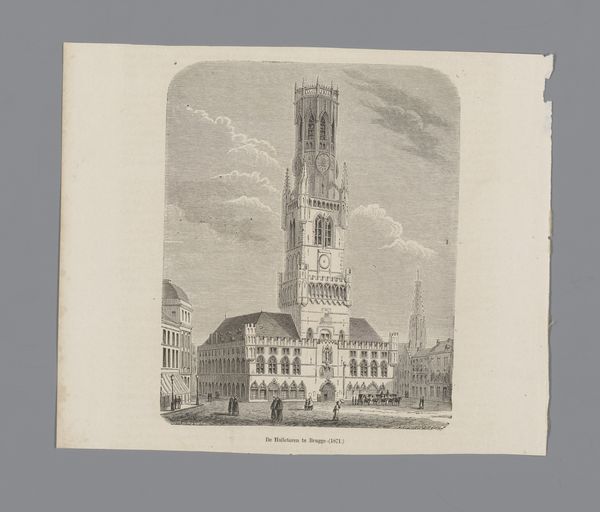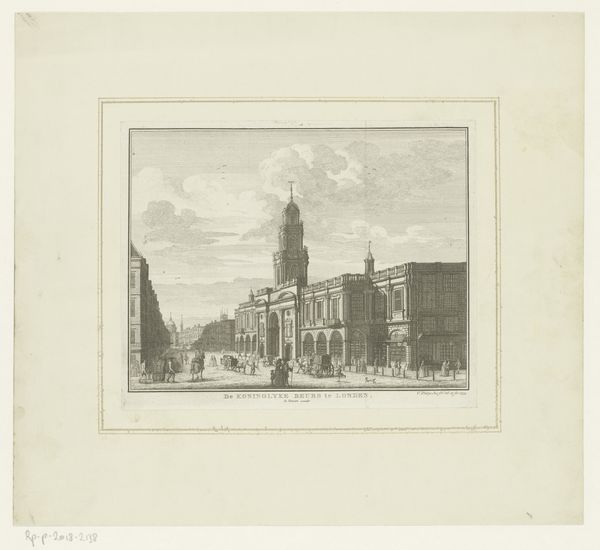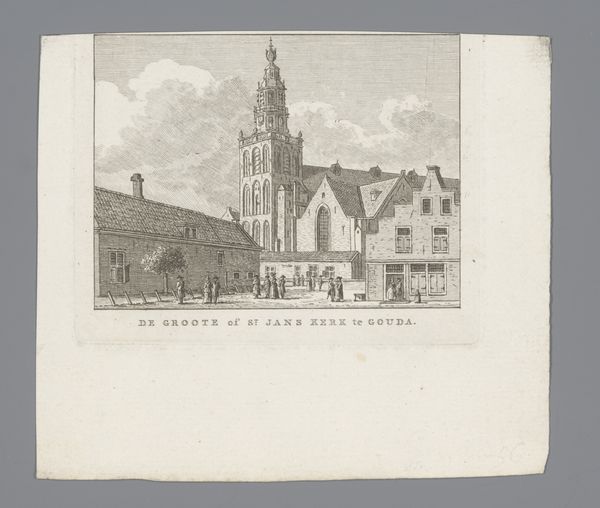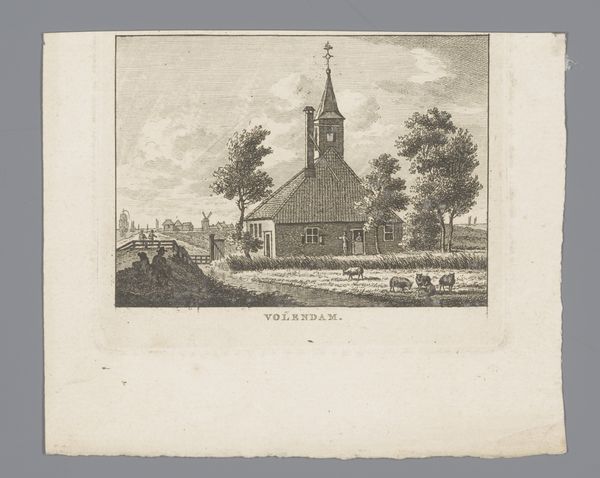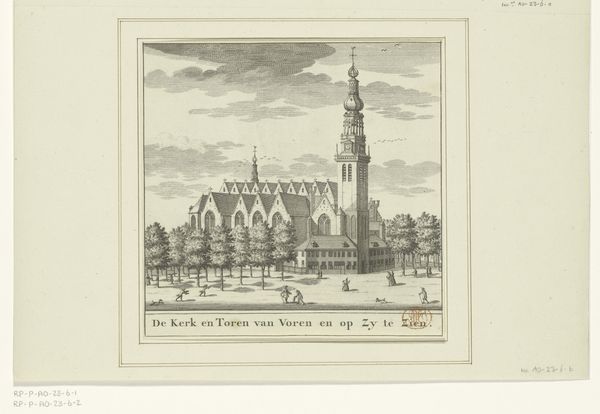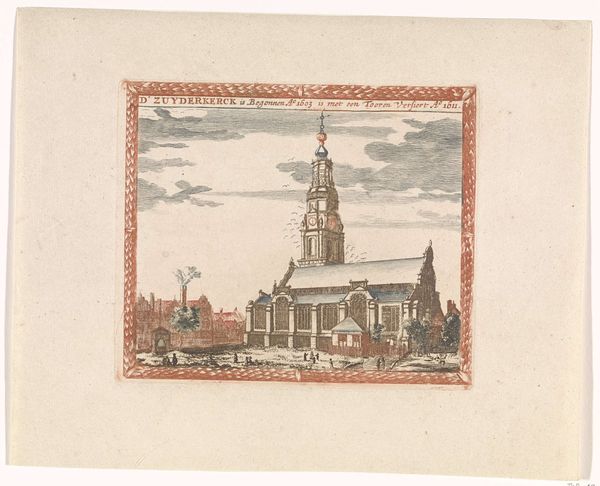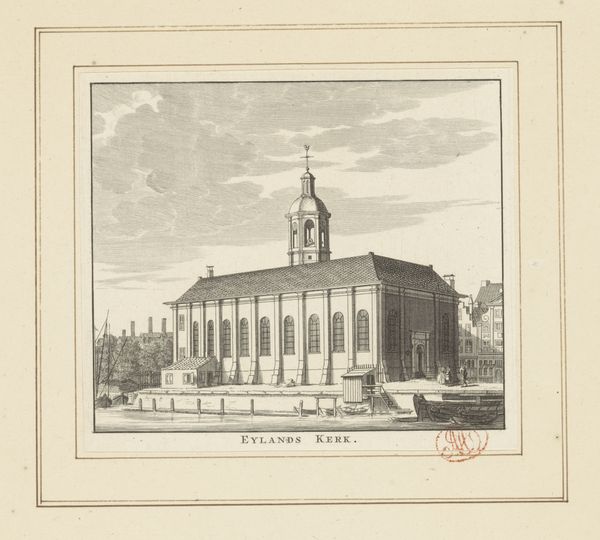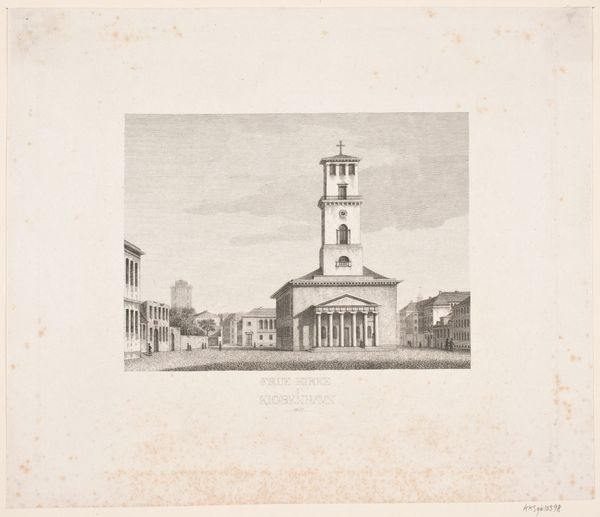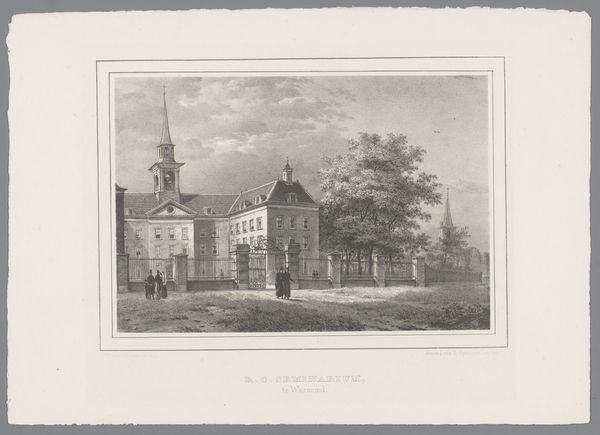
drawing, print, paper, engraving
#
drawing
#
dutch-golden-age
# print
#
landscape
#
paper
#
cityscape
#
engraving
Dimensions: height 118 mm, width 136 mm
Copyright: Rijks Museum: Open Domain
Editor: This is "Gezicht op de Zuiderkerk te Amsterdam," or "View of the Zuiderkerk in Amsterdam," made in 1664 by Jan Veenhuysen. It's an engraving. I'm struck by the artist’s incredible detail – the steeple is so elaborate. What can you tell me about it? Curator: It's fascinating to consider this work within the context of the Dutch Golden Age and the rise of Amsterdam as a major center for trade and culture. Views like these served a crucial function, not just as records of architecture, but as symbols of civic pride and Protestant values. What kind of values would you say the imagery conveys? Editor: I suppose that it celebrates the impressive architecture of the Church, so civic pride makes sense. It looks very ordered and structured. Curator: Exactly. Consider that in the 17th century, the Zuiderkerk was a relatively new and modern structure, paid for in large part by its prominent citizens. Images like this helped solidify Amsterdam’s status as a Protestant, progressive center of commerce and thought. It was as a point of pride. The orderly structure you mentioned also projects a kind of stable, moral, trustworthy environment. And who, exactly, was the intended audience? Editor: Perhaps civic leaders, or even prospective residents or investors? To show Amsterdam off? Curator: Precisely. These views circulated widely as prints, and as an endorsement of the social, political, and religious climate of the time. Editor: So, it's more than just a picture, but really a form of... public relations? I never thought about it that way. Curator: Absolutely, these prints shaped how Amsterdam saw itself, and how it was perceived by the wider world. The city's leaders must have understood the importance of creating imagery, especially those involving the landmarks in their own city, to project an image to the public of how progressive they were, relative to the times. Editor: I see this image with a new, much broader understanding, beyond the surface appearance, of how art may affect how politics and imagery shape how society is structured. Thank you!
Comments
No comments
Be the first to comment and join the conversation on the ultimate creative platform.
